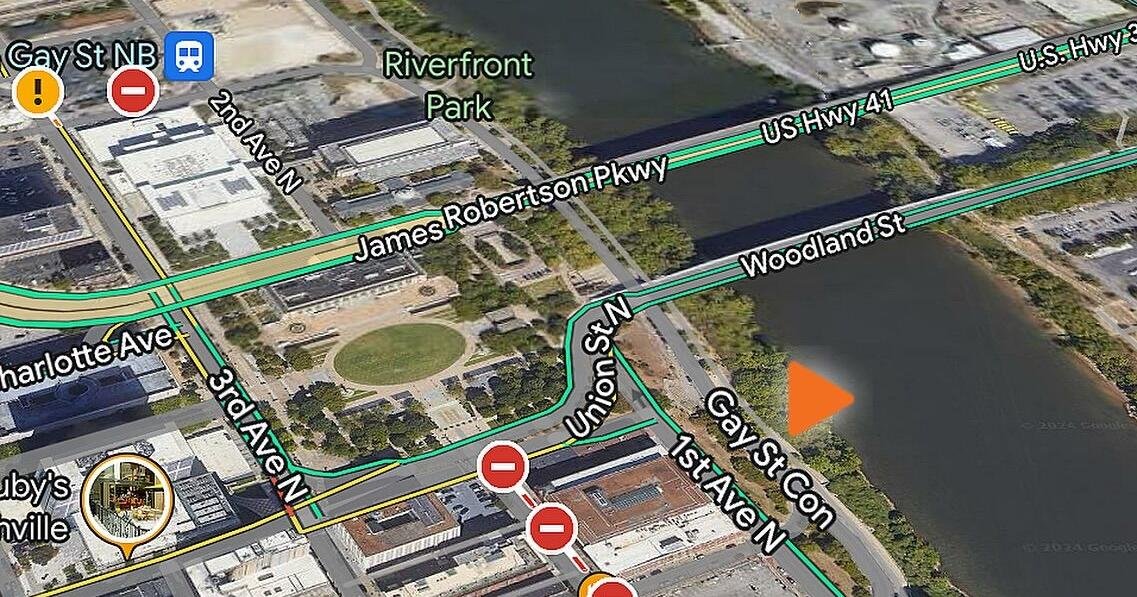Gay Street and the Cumberland River are two of Tennessee’s most renowned landmarks, each steeped in history and brimming with contemporary significance. Situated in Knoxville, Gay Street is a vibrant artery that has been central to the city’s economic, cultural, and social life for over two centuries. It is renowned for its historic architecture, cultural institutions, and lively arts scene. The Cumberland River, flowing through Nashville, is a major waterway that has shaped the city’s development from its early days as a trading post to its current status as a bustling metropolis. The river offers a stunning natural backdrop and numerous recreational activities, making it a beloved feature of the region.
The Historical Significance of Gay Street
Gay Street’s history dates back to the early 19th century when it was established as part of Knoxville’s original town plan in 1791. Over the years, it developed into the main commercial and social hub of the city. The street’s architecture reflects its rich history, with buildings that span several architectural styles and periods. Notable among these is the Tennessee Theatre, an opulent movie palace that opened in 1928. With its lavish interior and Spanish-Moorish design, the Tennessee Theatre is a testament to the golden age of cinema. The Bijou Theatre, another landmark on Gay Street, has been a cultural cornerstone since 1909, hosting performances ranging from vaudeville acts to contemporary concerts.
The history of Gay Street is also marked by significant social and political events. During the Civil War, Knoxville was a strategic location, and Gay Street witnessed much of the city’s wartime activity. In the 20th century, the street was the site of important civil rights demonstrations and political rallies. The preservation of Gay Street’s historic buildings has been a priority for the city, with efforts to maintain the architectural integrity of its significant structures. These efforts ensure that the street remains a living museum, offering a window into Knoxville’s past while continuing to serve as a vital part of the city’s present.
Modern-Day Gay Street: Culture and Commerce
In contemporary times, Gay Street has evolved into a dynamic center of culture and commerce. It is lined with a diverse array of shops, restaurants, galleries, and entertainment venues that cater to both locals and tourists. The street’s vibrant atmosphere is enhanced by its regular cultural events, such as the Dogwood Arts Festival, which celebrates the region’s artistic talents and natural beauty. The First Friday Art Walks are another popular attraction, transforming the street into an open-air gallery with artists showcasing their work and musicians performing live.
Gay Street is also home to several key cultural institutions. The East Tennessee History Center provides an in-depth look at the region’s past through its exhibits and archival collections. The Knoxville Museum of Art, located nearby, features a wide range of artworks, from contemporary pieces to historical artifacts, highlighting the rich artistic heritage of East Tennessee. The street’s theaters, including the Tennessee Theatre and the Bijou Theatre, continue to draw large audiences with their diverse programming, which includes Broadway shows, concerts, and film screenings.
The commercial vitality of Gay Street is further boosted by its eclectic mix of businesses. From boutique shops offering unique local goods to upscale dining establishments serving regional cuisine, the street provides a variety of experiences that appeal to different tastes and interests. This blend of commerce and culture makes Gay Street a microcosm of Knoxville itself, reflecting the city’s spirit of innovation and tradition.
The Natural Beauty and Recreation of Cumberland River
The Cumberland River is a major geographical feature that stretches over 688 miles, meandering through southern Kentucky and north-central Tennessee before joining the Ohio River. In Nashville, the river plays a central role in the city’s recreational and aesthetic appeal. The riverfront area, developed extensively over the past few decades, offers numerous parks, trails, and green spaces that provide residents and visitors with a place to relax and enjoy nature.
The Cumberland River Greenway is a network of trails that runs alongside the river, ideal for walking, jogging, and cycling. This greenway connects several parks and neighborhoods, making it a popular route for outdoor enthusiasts. The Shelby Bottoms Nature Center and Greenway, located along the river, offers educational programs and guided tours that highlight the region’s flora and fauna. The nature center is a favorite destination for families and school groups, providing a hands-on learning experience about the local ecosystem.
Boating and fishing are also popular activities on the Cumberland River. The river’s calm waters and scenic surroundings make it an excellent location for boating, whether it’s for leisurely cruises, kayaking, or paddleboarding. Several marinas and boat ramps along the river provide convenient access for boaters. Fishing enthusiasts can enjoy a variety of fish species in the river, including bass, catfish, and crappie, making it a favored spot for both casual anglers and serious fishermen.
Bridging Past and Present: The Cumberland River in Nashville
The Cumberland River has been integral to Nashville’s growth and development. In the early days, the river was a crucial transportation route, facilitating trade and commerce. The settlement that eventually became Nashville was established along the riverbanks, leveraging the waterway for economic and strategic advantages. Over the years, the river’s role has evolved, but it remains a central feature of the city’s identity.
Modern-day Nashville has embraced the river as a key element of its urban landscape. The John Seigenthaler Pedestrian Bridge, a former road bridge converted into a pedestrian walkway, offers stunning views of the downtown skyline and the river. This bridge connects key parts of the city, including downtown and the East Nashville neighborhood, and is a popular spot for both locals and tourists. The Cumberland Park, located along the riverfront, features innovative play spaces, an outdoor amphitheater, and scenic overlooks, making it a family-friendly destination.
The river also plays a significant role in Nashville’s vibrant music scene. The Ascend Amphitheater, situated on the banks of the Cumberland River, hosts numerous concerts and events, with the river providing a picturesque backdrop. The amphitheater’s open-air design and riverside location make it a unique venue that enhances the concert-going experience. Additionally, riverboat cruises offer a distinctive way to experience Nashville’s musical heritage, with many boats featuring live music and entertainment.
Revitalization efforts along the riverfront have transformed it into a dynamic area that blends historical elements with modern amenities. Projects such as the Riverfront Redevelopment Plan aim to enhance public access to the river, create more green spaces, and promote sustainable development. These efforts reflect a broader trend of cities reimagining their waterways as valuable urban assets that can drive economic growth, improve quality of life, and celebrate local heritage.
Conclusion: A Dual Heritage of Culture and Nature
Gay Street and the Cumberland River each offer a unique and complementary perspective on the rich heritage and vibrant life of Tennessee. Gay Street, with its historic buildings, cultural institutions, and bustling commercial activity, represents the dynamic spirit of Knoxville. The Cumberland River, with its scenic beauty, recreational opportunities, and historical significance, is a central feature of Nashville’s landscape.
Together, these landmarks highlight the diverse attractions that Tennessee has to offer. Visitors can immerse themselves in the cultural and historical depth of Gay Street, enjoying its theaters, museums, and festivals, while also taking advantage of the natural beauty and recreational activities provided by the Cumberland River. Whether exploring the urban vibrancy of Knoxville or the tranquil waters of the Cumberland River. These experiences reflect the enduring spirit of Tennessee and its commitment to preserving its heritage while embracing modernity.
These landmarks are not just places to visit. They are integral parts of the community that tell the story of Tennessee’s past, present, and future. They offer a blend of culture and nature that appeals to a wide range of interests. Making them essential highlights for any visitor to the Volunteer State. By exploring Gay Street and the Cumberland River, one can gain a deeper appreciation. Rich tapestry of history, culture, and natural beauty that defines this region.









